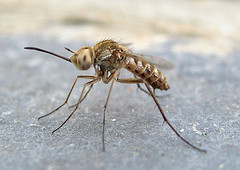Species Diversity and Edge Effects
Species Diversity
Species diversity is the dispersal and number of species in one location.
Edge Effects
Edge effects are the boundary between natural habitats and developed or disturbed land.
How does one affect the other?
With the creation of an edge to any natural ecosystem, the area outside the boundary is deeply affected. Examples of the numerous changes are air temperature, vapor pressure deficit, soil moisture and light intensity.
These changes in the ecosystem lead to changes in animal life within that environment. Some species do poorly in the new conditions, and others benefit. Good or bad, edge effects influence the wildlife species within 300 feet (at the very least) of forest border. Edge effects promote the growth of opportunistic species. This changes the diversity of species within the ecosystem.
Results of Edge Effects
In the creation of an open forest boundary, sunlight and wind penetrate deep into the forest from the edge. This dries out the forest that is closest to the edge.
Forest fires are a common result of edge effects. The portion of the forest close to the edge becomes dried out due to increased light availability. All of this dried out shrubery and plants makes a fire all the more likely.
The amount of area altered by edge effects in the Amazon is well above the amount of land that has been cleared.
Examples of Changes in Species Diversity in Edge Effects
Brown-Headed Cowbird: The Brown-Headed Cowbird lays its eggs in the nests of songbirds who nest near forest boundaries. The more forest edge in correlation to the interior of the forest, the more cowbirds and fewer songbirds as a consequence.
Mosquitoes: Mosquitoes have adapted well to surviving around the edges of human habitation. For example, trail and hiking areas located near human settlements often house more mosquitoes than deep forest environments do. Therefore, the more edge habitat available, the more mosquitoes will thrive as a result. Although this is beneficial to mosquitoes, not all insects can survive at or near edges. Edge effects cause the decrease in numbers of such species.
Humans: Edge habitats are more beneficial for humans. This is due to the fact that predators (bears and wolves for example) will likely never be seen outside the confines of a deep forest area. The outcome of more edge habitat in this case is that humans see less of a threat from other species. However, this will also change the population numbers of these predators.
Extra Information
http://www.nationmaster.com/encyclopedia/Edge-effect
Documentation of Sources
1) Wikimedia Foundation
http://en.wikipedia.org/wiki/Species_diversity
2) Wikimedia Foundation
http://en.wikipedia.org/wiki/Edge_effect
3) Nation Master
http://www.nationmaster.com/encyclopedia/Edge-effect


